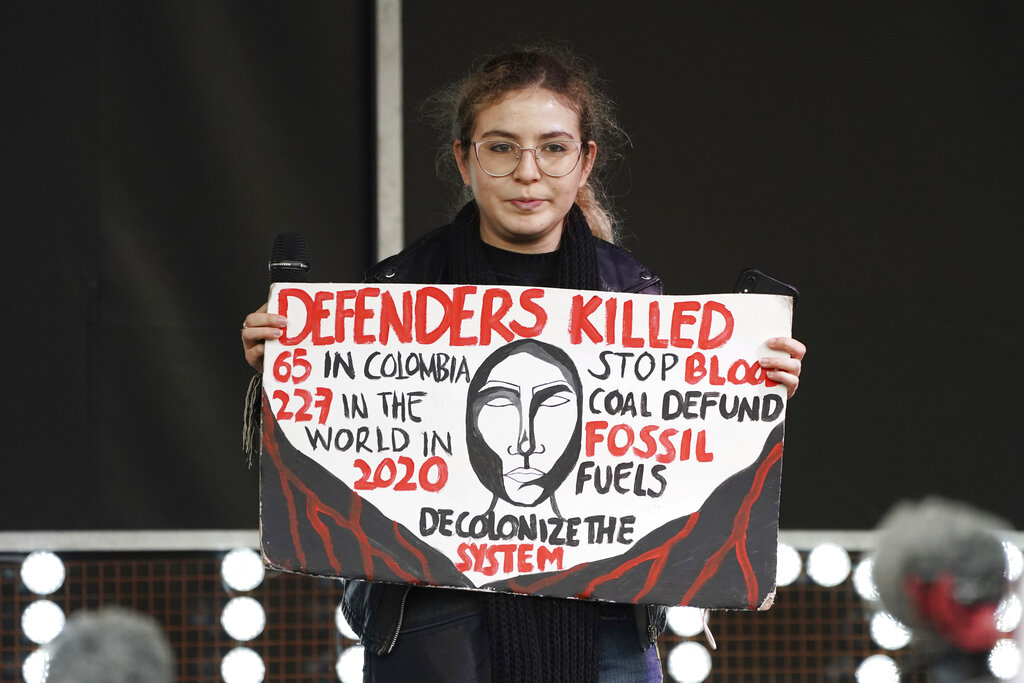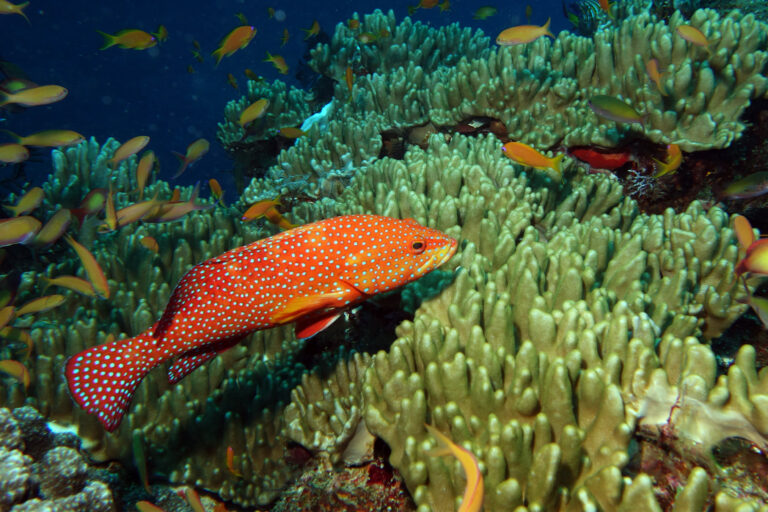- The newly published 2025 Planetary Health Check report confirms transgression of the ocean acidification planetary boundary — the seventh Earth system threshold crossed, putting a “safe operating space for humanity” at risk. Oceans act as a key climate stabilizer, resilience builder and Earth life-support system.
- Marking the launch of the 2025 Planetary Health Check, Mongabay speaks with report co-author and renowned Earth system scientist Johan Rockström about how the transgression of planetary boundaries is eroding environmental justice — the right of every human being to life on a stable, healthy planet.
- Rockström, who led the international team of scientists who originated the 2009 planetary boundary framework, also speaks about the failure to achieve a U.N. plastics treaty in August and the challenge of accomplishing planetwide sustainability in a time of widespread armed conflict and political instability.
- He likewise emphasizes the need to bring the U.S. back to the negotiating table at COP30, the U.N. climate summit scheduled for November, in Belém, Brazil, and addresses the importance of inserting the planetary boundaries framework into those talks.
Initiated in 2024, the Planetary Health Check is a comprehensive, science-based global initiative dedicated to measuring and maintaining Earth systems critical to life as we know it.
These annual reports were created to provide a regular, comprehensive assessment of the state of our world, utilizing the most current planetary boundaries science — monitoring changes, gauging risks, identifying urgent actions needed, developing solutions and determining progress in maintaining a “safe operating space for humanity.”
The just-published 2025 assessment finds that seven out of the nine critical planetary boundaries (PBs) have been breached: climate change, change in biosphere integrity, land system change, freshwater change, modification of biogeochemical flows, the introduction of novel entities, and now, ocean acidification.
All of these Earth system boundary transgressions show escalating trends, threatening further deterioration and destabilization of planetary health in the near future. Just two PBs remain within the safe operating space: increase in atmospheric aerosol loading (with an improving global trend) and stratospheric ozone depletion (currently stable).
Earth System scientist Johan Rockström, director of the Potsdam Institute for Climate Impact Research (PIK) in Germany, spoke to Mongabay on the occasion of the launch of the Planetary Health Check 2025 report, which announces the transgression of the ocean acidification boundary — the seventh Earth system boundary threshold crossed, putting the safe operating space for humanity at grave risk.
PIK’s director is co-author of the 2025 report and author of the book and video documentary Breaking Boundaries: The Science of Our Planet (2021), which explains the planetary boundaries framework, which was developed in 2009 by an international scientific team led by Rockström. This framework was also the inspiration for the Frontiers Planet Prize, which awards three prizes of $1 million every year to research offering the greatest potential to address the ecological crisis.
The newly released report signals a planetary emergency requiring immediate and coordinated global action, say scientists. (This interview has been lightly edited for brevity and clarity.)
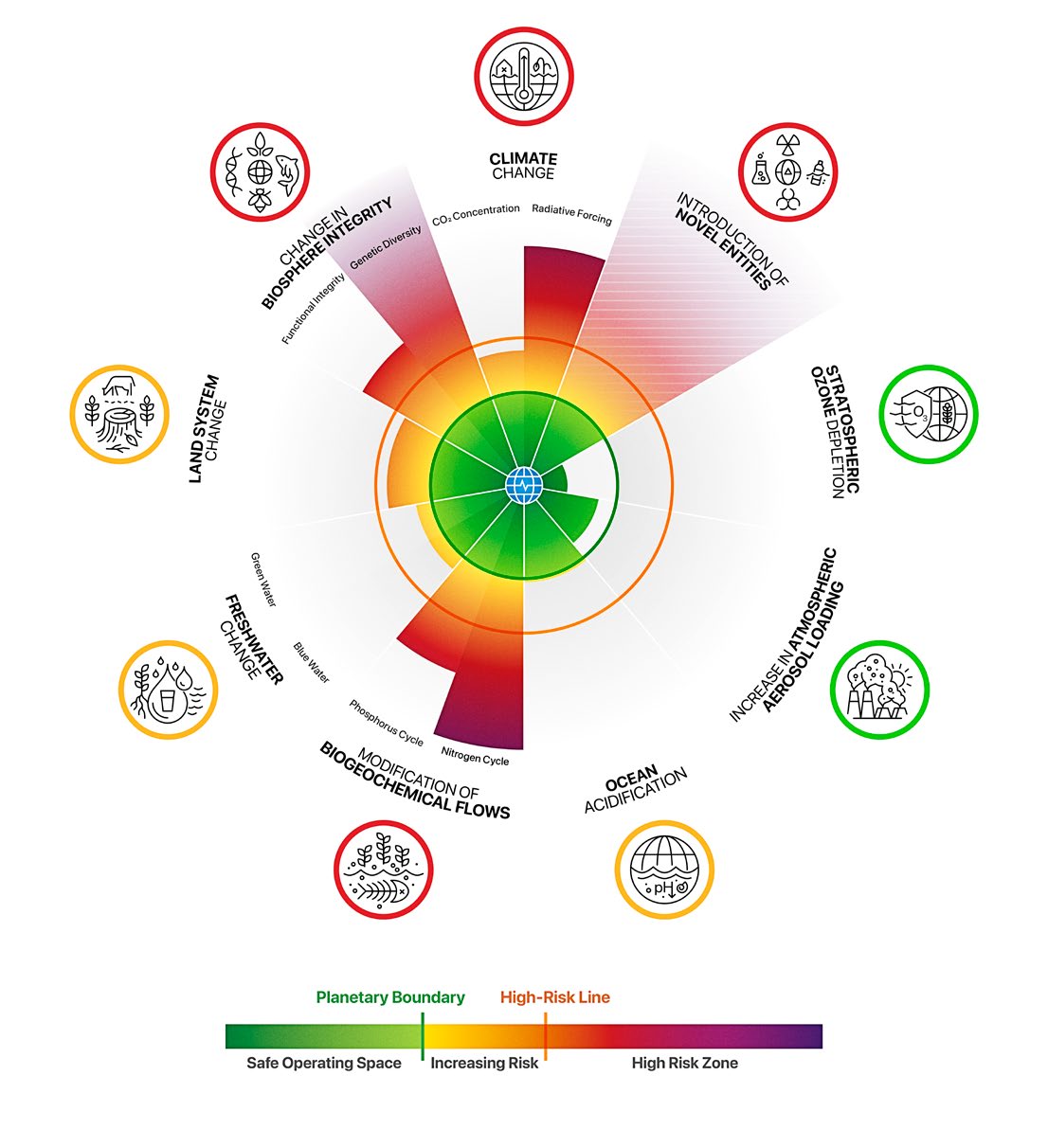
Mongabay: The Planetary Health Check 2025 report announces the transgression of the ocean acidification boundary (the decreasing of pH in seawater caused by the absorption of atmospheric CO₂), the seventh Earth boundary threshold to be crossed due to humanity’s actions. What does this mean and why is it relevant to all of us?
Johan Rockström: The latest update — based on data observations as to where [ocean] acidification is developing, and on the refined methodology for making those observations — concludes, unfortunately, but not unexpectedly, that the ocean acidification boundary has now been breached.
This is a very worrying trend, because the ocean is under multiple planetary pressures: [including] the faster than expected heat increase, the ocean acidification boundary now being breached, continuous eutrophication, and the loss in biodiversity due to overfishing and other causes. So, we have an ocean system on planet Earth, across all marine systems, under high and increased pressure.
Mongabay: While these oceanic changes will impact the whole world, how could they affect vulnerable coastal populations across the Global South, particularly in South and East Asia, the Pacific Islands and the Caribbean?
Johan Rockström: There are two types of impacts: the fast and the slow ones. With regard to the fast ones, we are seeing that the breaching of multiple planetary boundaries in and around the oceans have immediate impacts on hundreds of millions of people — at least 300 million — whose livelihoods depend [directly] on the services provided by shallow healthy marine ecosystems along the coasts.
The first fast effect we are [seeing] now is the fourth global [coral] bleaching event [beginning in 2023 and continuing today], triggered by the breaching of the climate [planetary] boundary. So, the heat in the ocean is causing bleaching, which is pushing tropical coral reef systems toward collapse. This is a very fast, immediate and dramatic hit, which undermines the spawning grounds [used by] fishing communities, the tourism industry and other areas, too, because the fish that breed in shallow coastal regions also provide [marine] species richness and stability for deeper ocean systems.
Secondly, you have unsustainable industrial fishing contributing to breaching the biodiversity boundary, eradicating species by fishing down populations [which causes] spillover on coastal communities.
On top of that, you have ocean acidification, which chemically breaks down calcium carbonate, the fundamental building block for marine life. All shell-forming species — ranging from animal plankton to hard corals — depend on calcium carbonate. And when this is eroded, it increases stress on all marine life in shallow coastal regions.
And if all the above was not enough, another boundary has been transgressed, namely the biogeochemical boundary, where land management — agriculture and urban waste management — is flushing [large amounts of] nitrogen and phosphorus into coastal zones, causing eutrophication.
This [in turn] means that when healthy coral reef systems see more [bleaching] stress, more nitrogen and phosphorus lead to exponential growth of soft algae, which then takes over, and you end up creating a massive green-slimy monoculture that settles on top of the coral reefs, consuming all the oxygen in [that part of] the ocean.
So, you have multiple stressors hitting at the same time, and all of them push the [ocean] system towards collapse. This has immediate effects on livelihoods.
Mongabay: You just mentioned the collapse of coral reefs as a ‘fast’ impact of ocean acidification, but which would be the ‘slower’ impacts?
Johan Rockström: The second type of impacts, the slower ones — the most catastrophic outcomes in the long term — is the crossing of thresholds for big ocean tipping points. One of these causing more concern is the [slowing or shutting down of the] Atlantic Meridional Overturning Circulation (AMOC) — or at least one part of it, the Gulf Stream, one of the engines running the heat conveyer belt in the oceans.
The flow and circulation of water in the North Atlantic is slowing down to a point where several [recent] studies are saying that we cannot exclude [the possibility of] a shutdown of the AMOC, and that would have global impacts: It would lead to accelerated warming on a planetary scale, changes to the [world’s] monsoon systems — contributing to massive shifts in rainfall in West Africa and over the Amazon Rainforest and increasing the melting rate in Antarctica (because it would lock in more warm surface water near the Ice Continent).
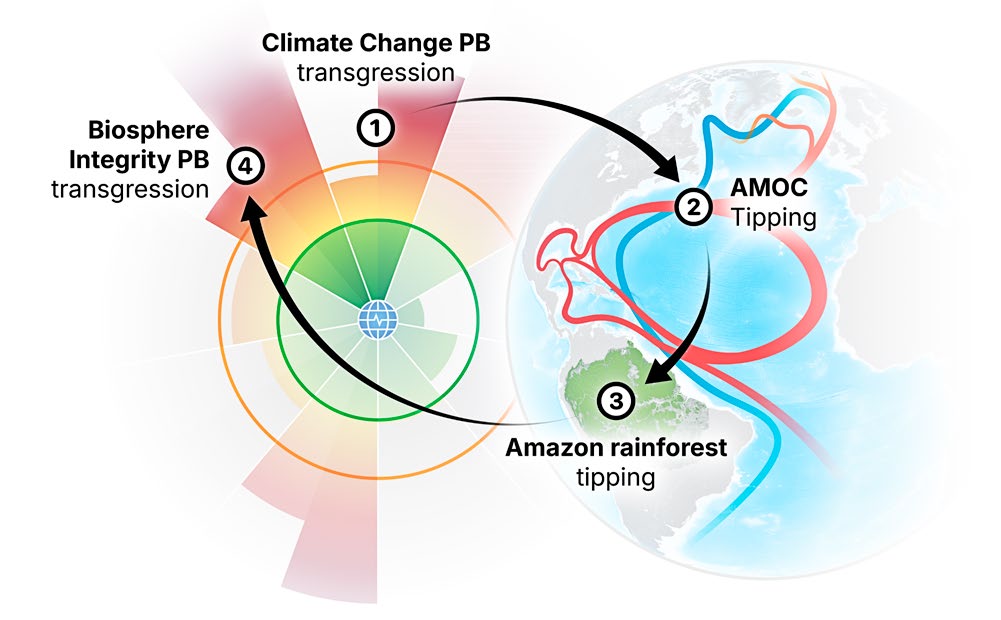
What makes me particularly nervous here is that we know clearly that the AMOC has shut down in the past: Over the past 1 million years, the AMOC has shown that it has the ability to flip [away from] a healthy and stable functioning state — like the one we’ve had on Earth throughout the existence of modern humans over the past 100,000 years, or since we left the last Ice Age 18,000 years ago.
I am also worried because we know why the AMOC collapses: This is due to the dilution of salinity [in the North Atlantic]. The Greenland Ice Sheet is rapidly melting and releasing cold freshwater, which dilutes the heavy saline water that sinks because it’s so heavy and drives this whole [ocean circulation] system.
So, the ocean system is under two pressure points: One of these is the fast factors — the bleaching, acidification, loss of fish and eutrophication. The other is the slow factors — the risk of crossing tipping points — with the AMOC being the one we’re focusing on more right now because it would have such a large impact globally.

Mongabay: What are the global effects of a major change in AMOC?
Johan Rockström: Let’s start by saying what a stable AMOC does: It warms heavy saline waters that flow on the surface from the southern Atlantic Ocean up to the North Atlantic, reaches the southern tip of Greenland and then releases that heat to the atmosphere.
This heat release is a natural function which makes life liveable in Scandinavia and parts of Russia, making this a fundamental regulator of the regional weather system and climate in northern Europe.
If the AMOC collapses, you would no longer have that warm hot flux from the Southern Ocean, so you would get an abrupt and catastrophic cooling [in the Global North]. Studies show reductions in temperature of less than or equal to10° Celsius [18° Fahrenheit] in Scandinavia, causing extensive impacts in parts of wealthy Northern countries. But at a global level, an AMOC shutdown would accelerate warming.
The Intergovernmental Panel on Climate Change [in its Sixth Assessment of climate in 2023] puts the likelihood of a shutdown of the AMOC in this century as a low likelihood with medium confidence. What scientists are saying here is that, based on findings [as of 2023], an AMOC shutdown is not likely to happen this century, but they don’t have high confidence in that statement.
But since that last IPCC report, there have been some big research papers published that all point in the same direction: We have underestimated the probability of a shutdown. In other words, the probability of a shutdown is higher than stated by the IPCC.
If you ask Professor Stefan Rahmstorf, a physicist and physical oceanographer working at PIK, and one of the leading AMOC scientists, he will tell you that the probability of a shutdown is closer to 10% [this century].
This is an unacceptable risk, because risk is equal to probability, multiplied by impact. For instance, you would buy an insurance policy on your home even if the probability of the house burning down is lower than 1%, since a fire would be a catastrophic loss.
Put simply, when impacts are unacceptably high and catastrophic, we should act on any probability exceeding 1%. But we are now closer to a 10% chance that AMOC will collapse this century [with unacceptable catastrophic impacts].
This led a group of 44 scientists to write a letter to the heads of state of the Nordic countries; the Nordic Council of Ministers. This letter summarized the science of an AMOC shutdown and pleaded that it requires immediate action.
This is the canary in the coal mine, the factor that should make all political leaders rise and accelerate the pathway away from risk. I believe this [threat] to be societally unacceptable and disturbing. [Inaction to date] is not due to ignorance: The world has deliberately decided to ignore this concern.
Somehow, when it comes to environmental issues, leaders tend to say that we cannot think about risk in terms of private property in the same way we think about nature. But sadly, it’s the same thing. We must apply the same philosophy to climate risk as we do to airplane crash risk.
This reminds me of Don’t Look Up — the [2021] movie starring Leo DiCaprio — when they announced that an asteroid was on its way to hit the Earth. If there were at least a 10% chance of causing extinction of a significant portion of the planet’s life, we would react, wouldn’t we?
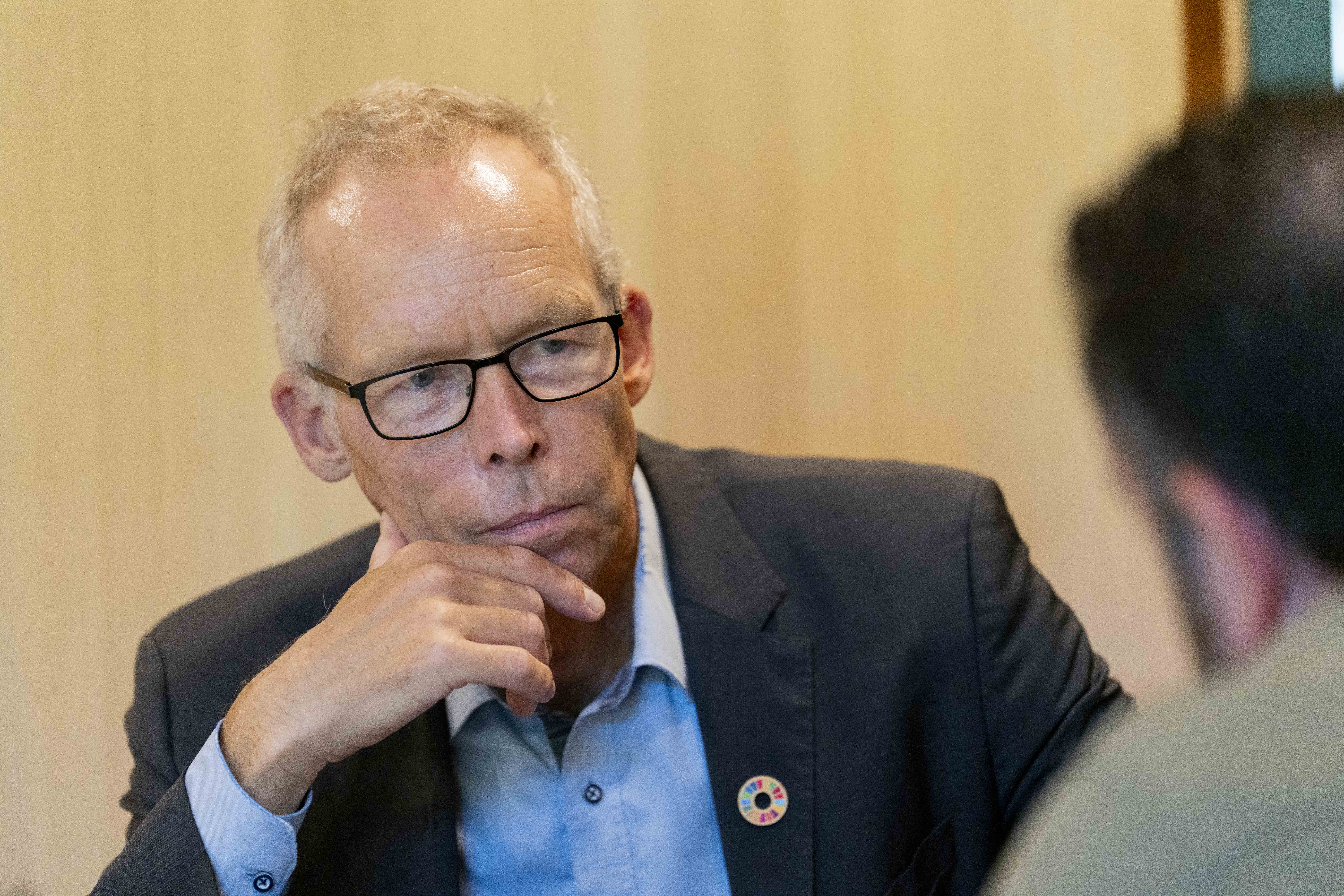
Mongabay: The United Nations Plastics Treaty summit in Geneva this August marked the culmination of a three-year negotiation process, but those talks failed to achieve an agreement. Since petrochemical plastics pollution figures hugely into the transgression of the novel entities (pollution) planetary boundary and substantially impacts the climate boundary, do you have thoughts on the summit results and where we need to go next?
Johan Rockström: It was undoubtedly, from a pure scientific perspective, a huge disappointment. We now have data that allows us to monitor systems at a planetary scale, and one thing we are mapping is microplastics.
We’re now finding microplastics everywhere: We had a scientific expedition sailing across the Northwest Passage, taking samples across the entire Artic, and there were microplastics in every sample.
Of course, it’s a failure and it’s very disappointing that the petrochemical industry digs in its heels and does not see that it must contribute to breaking this linear and unsustainable production development line of exploiting oil and just wasting plastics.
However, it is clearly encouraging to see that the pressure is on; that we’re not only gathering [support for] global environmental policy on climate, but we’re also seeing it with a global biodiversity framework, microplastics, freshwater and recognizing the role of nitrogen and phosphorus pollution. Planetary boundaries are getting more planetary-scale governance attention, and I think that’s important.
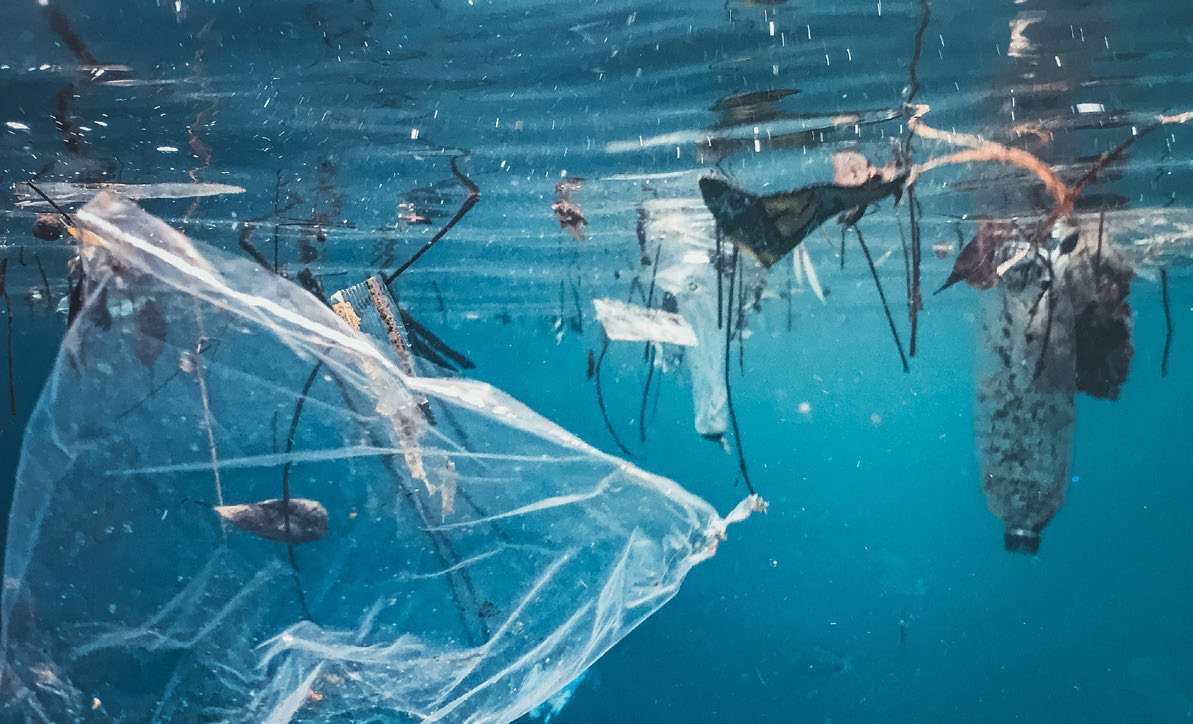
Mongabay: How can we draw attention back to climate change amid war in the Middle East, the Ukraine and elsewhere? Or do we tie all these fights together?
Johan Rockström: It’s a very important question, and not an easy one. It is not only unfortunate but also irresponsible — at a time when we’re putting the liveability stability on Earth at risk — to allow ourselves to have so many domestic, geopolitical, nationalistic and armed conflicts, because the attention moves away from climate action.
Peace is equally essential to the health of the planet, but the problem is that the world of today, unfortunately, is unable to keep attention on more than one [big issue] at a time.
This means that there’s a risk of drifting away from solving the climate crisis, and that has not only to do with the attention shown by leaders, but also, where does the money go? The money increasingly goes to defense — not only to armed conflicts, but to the armament of economies.
Is the solution to merge these topics [simultaneously seeking combined climate change and conflict solutions]? My answer is no; we should not merge them.
Why? It is not because they are not connected: We have rising evidence that eroding and breaching planetary boundaries leads to food and energy insecurity, [less] secure access to land, which leads to migration displacement, social collapse and conflicts. So, when in the West Bank the Israeli military digs up hectares of olive tree plantations, this is essentially killing life support related to planetary boundaries.
[Climate and conflict] are connected, but they should not be intertwined in my view, for a simple and pragmatic reason: Unfortunately, the efforts to try to stop the armed conflicts in the world — if possible — are even more politicized than the topic of sustainability.
Those who want to slow down efforts to come back within the safe operating space for humanity and planetary boundaries use this [excuse] all the time by bundling everything together and saying, “Supporting Palestinians in Gaza is left extremism,” [and so is] climate action. This [grouping] is done deliberately to give the impression that the sustainability pathway is some form of ideological extreme position, which of course it is not.
On the contrary, sustainability is the path to a modern, competitive and prosperous future.
It’s important to keep the planetary boundary agenda on that track: Fundamentally, [avoiding transgressions of] planetary boundaries is all about equity, justice and stability.
What do we fight over in wars around the world? If a land that is fought for does not have water, productive soil or a functioning atmosphere, it is a useless resource.
Everything is connected, but I think we must navigate this [global crisis] in a very clever way and [avoid] manipulation. Therefore, it is important that the sustainability agenda stays on track to being a path to the future we want, which can give us better security and health. So, no, I would not place the climate crisis in the same bucket as the conflicts in Gaza or the Ukraine, for example.

Mongabay: The United States appears to be escalating an ideological and commercial conflict with Brazil, India and China. Brazilian President Luiz Inácio Lula da Silva says he wants to invite President Donald Trump to the COP30 climate summit this November in Belém. What would be your elevator talk regarding COP30: What would you say to Lula, Trump and other global leaders?
Johan Rockström: I would very much encourage and wish President Lula to try and get President Trump to COP30. I think that would be very good for Trump personally, and very good for the U.S. economy. My elevator pitch for Belém is that we have a [global environmental] crisis on our watch; the window of opportunity is still open, but we have to accelerate to avoid overshoot, and we need to come back into a safe operating space for planetary boundaries.
We have all the evidence that the solutions are scalable, and [if we act decisively] we would become winners in terms of modernity, security, peace and health, but also in terms of equity.
It’s a pathway to the future, and Brazil has a particular opportunity with Lula: Here you have a credible voice to say that in order to solve the climate crisis, you also have to take on the [protection of] living systems on the planet — biodiversity, freshwater, nitrogen and phosphorus, land use, oceans and all Earth systems. There are few actors and political leaders that can articulate and lead on this with credibility today, and Brazil can do it.
Mongabay: Finally, what will your position be if the negotiations fail in Belém?
Johan Rockström: We have some headwinds [ahead], admittedly, but I’ll hang in there to the bitter end, you can rest assured.
Banner image: Johan Rockström presenting a planet boundaries talk at the 2025 Frontiers Planet Prize event in June. Image courtesy of Oliver O’Hanlon/Frontiers Foundation.
Planetary boundary pioneer Johan Rockström awarded 2024 Tyler Prize
Citations:
Rockström, J., Steffen, W., Noone, K. et al. A safe operating space for humanity. Nature 461, 472–475 (2009). https://doi.org/10.1038/461472a
Högner, A., Di Capua, G., Donges, J. F., Donner, R. V., Feulner, G., & Wunderling, N. (2025). Causal pathway from AMOC to southern Amazon rainforest indicates stabilising interaction between two climate tipping elements. Environmental Research Letters. doi:10.5194/egusphere-egu25-8514





